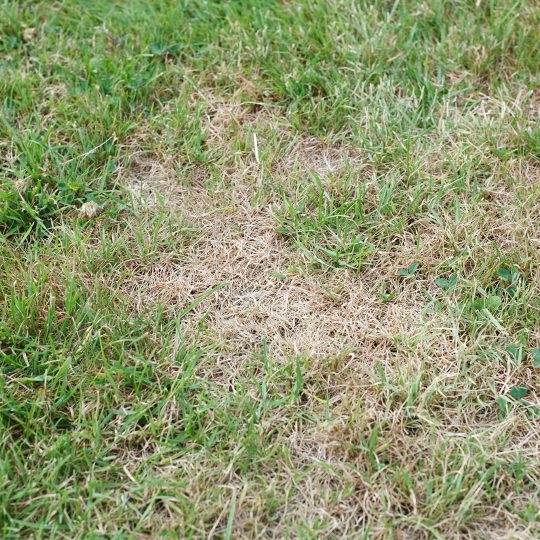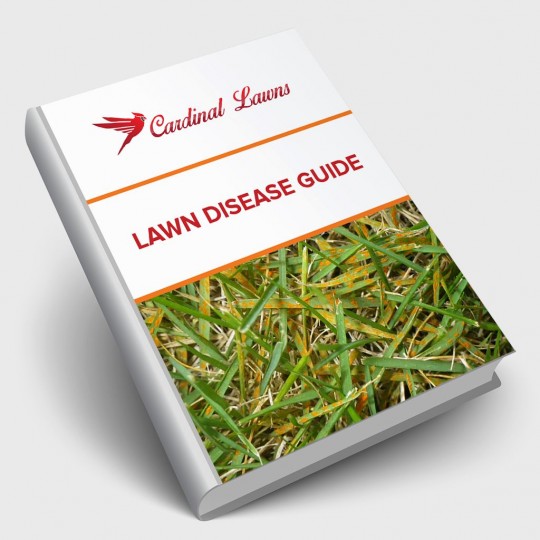Guide to Lawn Disease
What to Look for in Certain Conditions
Posted
March 8, 2018

How’s your yard looking? If you think you may have a certain lawn disease, check the list of signs and conditions below, then contact Cardinal Lawns to help find the best treatment solution.
Types of Lawn Disease
Anthracnose. Reddish-brown spots on leaves and effected areas of lawn that range from two inches to 10 feet large. Happens in hotter conditions—75 to 95 degrees—when there’s high humidity and excess rain.
Brown Patch. One of the most common diseases of fescue lawns. Leaves and grass stems die in large, circular patches in lawn. Also occurs in hotter conditions—75 to 95 degrees—when there’s high humidity and excess rain.
Dollar Spot. Grass dies in small, circular spots four to 12 inches wide that may fuse together into bigger blotches. Occurs in mild weather—60 to 85 degrees—in areas that are under fertilized, but there’s excess moisture.
Copper Spot. May look like Dollar Spot. Grass blades develop small red spots that enlarge and become darker. Small, circular patches one to three inches wide appear, and the grass within the patches die. Occurs in mild temperatures—70 to 80 degrees—with high humidity.
Powdery Mildew. White to light gray moldy-looking growth on grass blades. More likely to show up in shady areas in mild, damp weather with excess moisture.
Red Thread. Small patches of bleached-looking grass blades that shrivel from the tips. In wet weather, you may see small pink thread in the grass. Happens in more under fertilized areas with high humidity.
Rust. Dust-like, orangey spores cover grass blades. Happens more in dry, mild temperatures—60 to 75 degrees.
Stripe Smut. Pale green stunted grass blades with long black stripes that eventually curl and die. Occurs in cooler conditions between 50 to 60 degrees where there’s excess moisture.
Summer Patch/Frog Disease. Light green patches of grass up to 24 inches wide that later turn a reddish brown, and may have a circle of green grass in center. You’ll see this in drought conditions with high humidity and temperatures between 80 to 95 degrees.
Lawn Disease Treatments
There are a variety of antifungal sprays, granules, and other products on the market to help treat and prevent lawn disease. All instructions should be followed carefully for optimal results. The best thing you can do is contact local lawn and garden professionals, like Cardinal Lawns, to discuss the situation further.

Download Your FREE Lawn Disease Guide
Even the most manicured landscapes are susceptible to lawn disease. Take some time to learn about identification and removal before one takes over your lawn. This handy guide teaches you how to spot common lawn diseases as well as how to properly treat them.